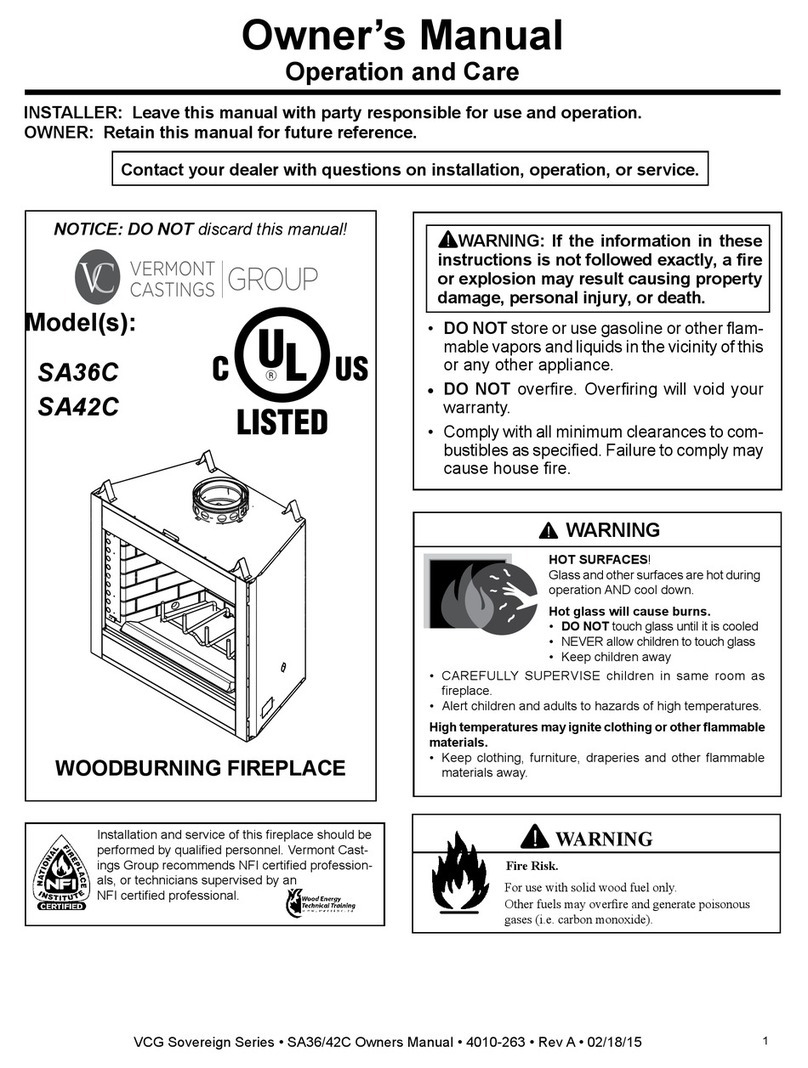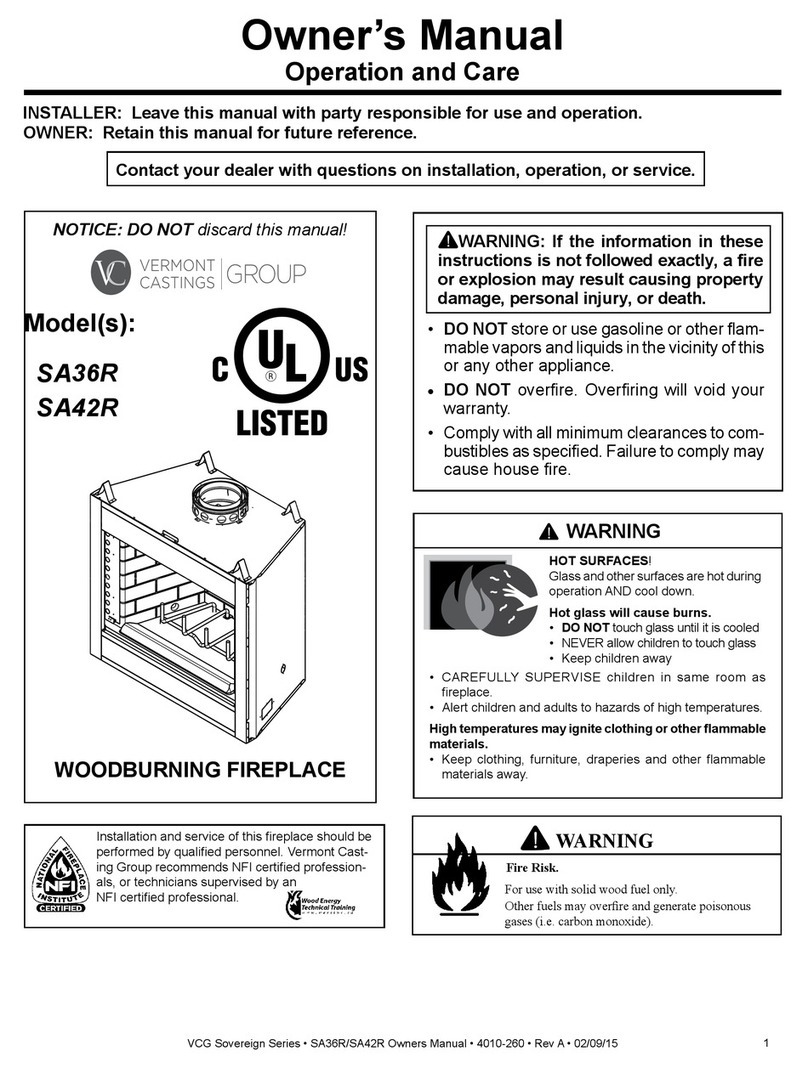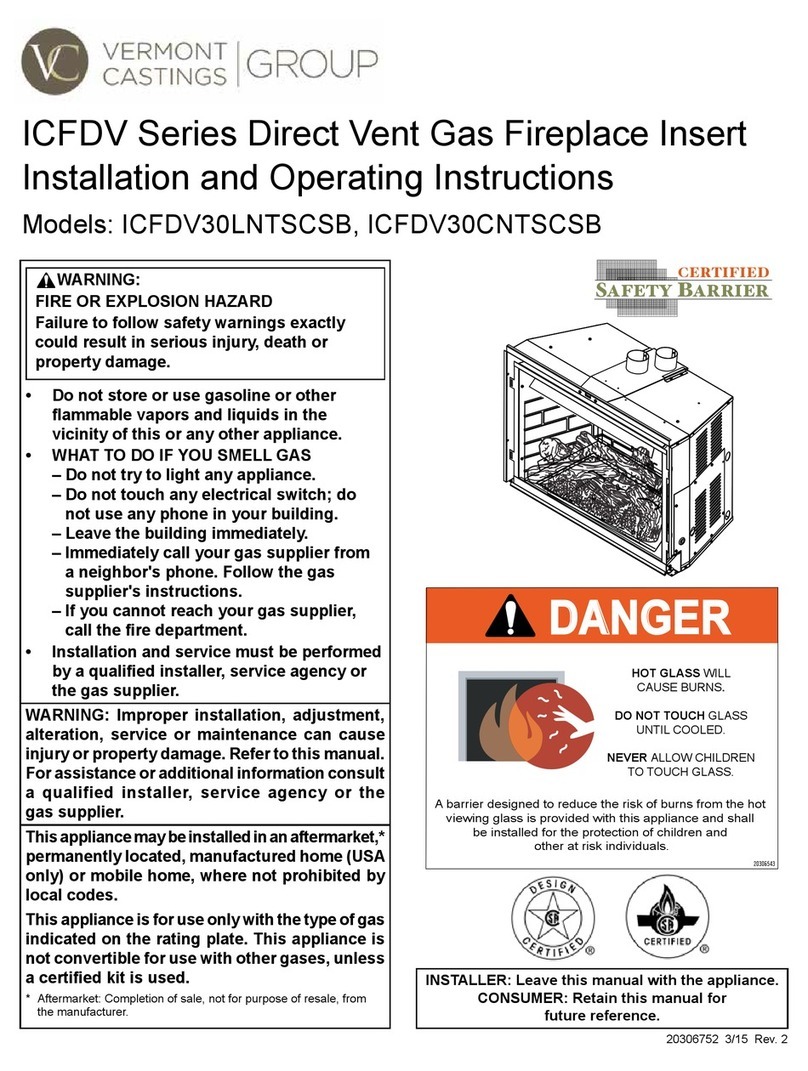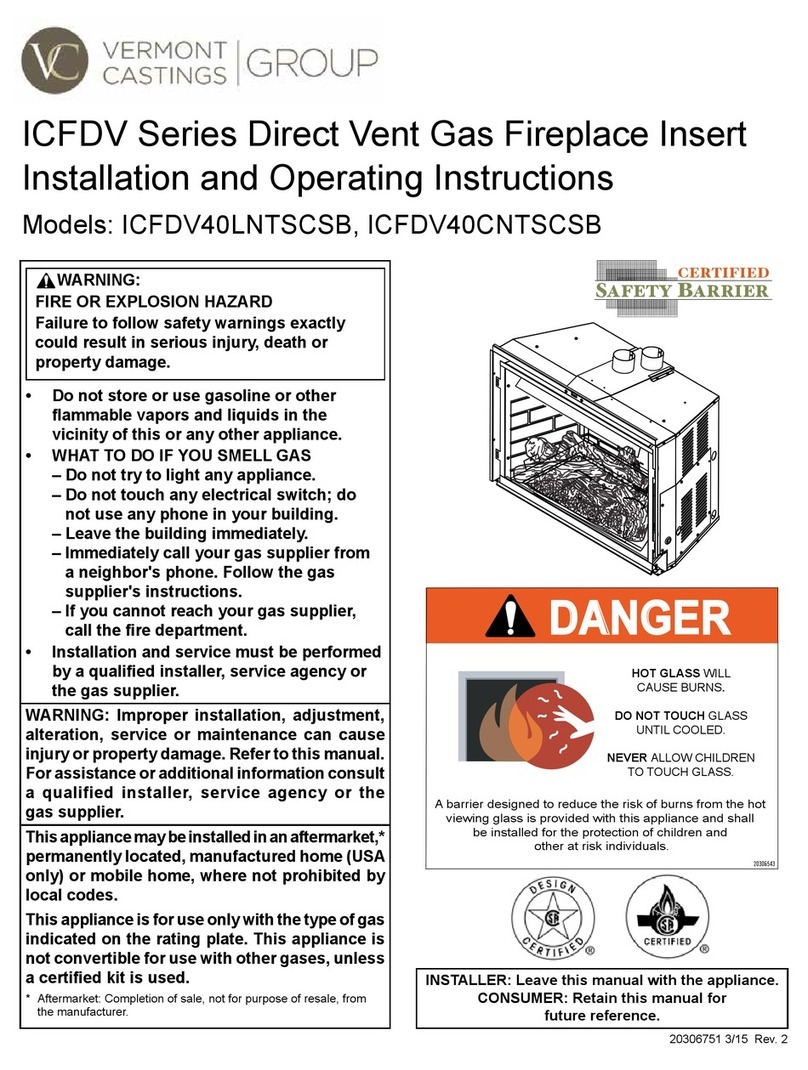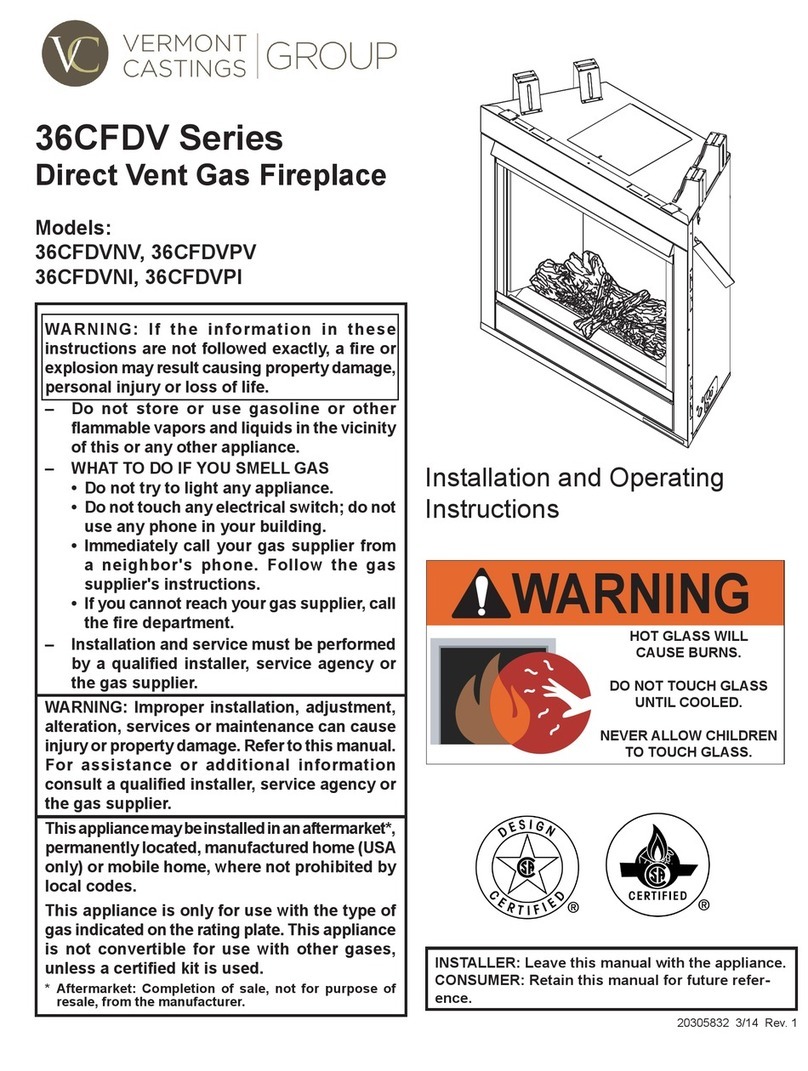
20308011 3
VFC Vent Free Fireplace System
IMPORTANT SAFETY INFORMATION
INSTALLER
Please leave these instructions with the appliance. OWNER
Please retain these instructions for future reference
.
WARNING:
• Any change to this heater or its controls can be dangerous.
• Improper installation or use of the heater can cause serious injury or death from fire, burns,
explosion or carbon monoxide poisoning.
• Do not allow fans to blow directly into the fireplace. Avoid any drafts that alter burner flame
patterns.
• Do not use a blower insert, heat exchanger insert or other accessory, not approved for use with
this heater where applicable.
13. Avoidanydraftsthatalterburnerflamepatterns. Donot
allow fans to blow directly into fireplace. Do not place
a blower inside burn area of firebox. Ceiling fans may
create drafts that alter burner flame patterns. Sooting
and improper burning will occur.
14. CAUTION: Candles, incense, oil lamps, etc. produce
combustion byproducts including soot. Vent-free
appliances will not filter or clean soot produced by
these types of products. In addition, the smoke and/
oraromatics(scents) maybereburned inthevent-free
appliancewhich canproduce odors.It isrecommended
to minimize the use of candles, incense, etc. while the
vent-free appliance is in operation.
15. This is an unvented gas-fired heater. It uses air
(oxygen) from the room in which it is installed. Provi-
sionsforadequate combustionand ventilationairmust
be provided.
16. This heater shall not be installed in a room or space
unlesstherequired volume ofindoorcombustion airis
providedbythe method describedinthe NationalFuel
Gas Code, ANSI Z223.1/NFPA 54, the International
Fuel Gas Code or applicable local codes.
17. Keeproomareaclearand freefrom combustiblemate-
rials,gasolineand otherflammable vaporsandliquids.
18. Unventedgasheatersareasupplementalzoneheater.
They are not intended to be the primary heating appli-
ance.
19. Unvented gas heaters emit moisture into the living
area. In most homes of average construction, this
does not pose a problem. In houses of extremely
tight construction, additional mechanical ventilation is
recommended.
20. Duringmanufacturing, fabricatingandshipping,various
components of this appliance are treated with certain
oils, films or bonding agents. These chemicals are not
harmful but may produce annoying smoke and smells
astheyare burnedoff during theinitial operation ofthe
appliance; possibly causing headaches or eye or lung
irritation. This is a normal and temporary occurrence.
1. Due to high temperatures, the appliance should be
located out of traffic and away from furniture and
draperies.
2. Childrenandadults shouldbealerted tothehazard
of high surface temperature and should stay away
to avoid burns or clothing ignition.
3. Young childrenshould becarefully supervisedwhen
they are in the same room with the appliance.
4. Do not place clothing or other flammable material
on or near the appliance.
5. Any safety screen or guard removed for servicing
an appliance, must be replaced prior to operating
the heater.
6. Installationandrepair shouldbedonebya qualified
service person.
7. Toprevent malfunctionand/orsooting, anunvented
gas heater should be cleaned before use and at
least annually by a professional service person.
More frequent cleaning may be required due to
excessive lint from carpeting, bedding materials,
etc. It is imperative that control compartments,
burners and circulating air passageways be kept
clean.
8. CARBON MONOXIDE POISONING: Early signs of
carbon monoxide poisoning are similar to the flu with
headaches,dizziness and/ornausea. Ifyouhavethese
signs, obtain fresh air immediately. Have the heater
serviced as it may not be operating properly.
9. The installation must conform with local codes or, in
the absence of local codes, with the National Fuel
Gas Code, ANSI Z223.l/NFPA54.
10. This unit complies with the latest edition of ANSI
Z21.11.2–2013, Unvented Heaters.
11. Do not install the heaters in a bathroom or bedroom.
12. Correct installation of the refractory cement logs,
proper location of the heater, and annual cleaning are
necessary to avoid potential problems with sooting.
Sooting, resulting from improper installation or opera-
tion, can settle on surfaces outside the fireplace. See
log placement instructions for proper installation.
